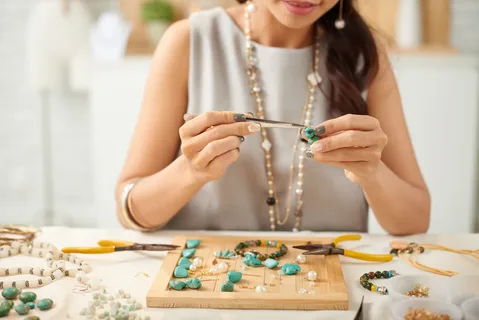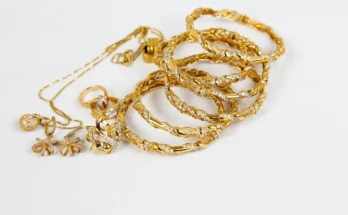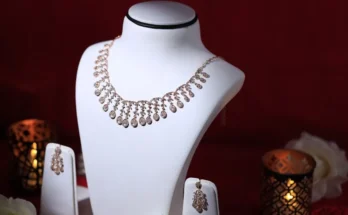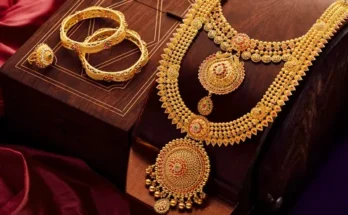Jewellery is one of humanity’s oldest and most intimate forms of expression. From the glint of a diamond engagement ring to the shimmer of handmade silver bangles, jewellery tells stories that are passed down through generations. It is not just about adornment; it is about identity, emotion, memory, and meaning. A piece of jewellery can whisper history, scream fashion, or simply glow with quiet elegance.
This journey into the glittering world of jewellery is more than just about gold and gemstones. It’s a look at how human hands shape beauty, how culture defines elegance, and how craftsmanship transforms raw elements into wearable art.
Why has jewellery held such a firm grip on human hearts for thousands of years? The answer lies somewhere between nature and nurture. There is a primal fascination with objects that shine—stones that catch the light, metals that glisten against the skin. But more than this, jewellery has always been a form of communication. It tells others who we are, where we come from, who we love, and even what we believe.
A Glimpse into the History of Jewellery:
The history of jewellery is as old as human civilization. From ancient talismans to royal crowns, jewellery has adorned us in many forms, carrying with it stories of cultures, classes, and crafts.
The earliest jewellery ever discovered dates back over 100,000 years—shell beads believed to have been strung together by prehistoric people. In Ancient Egypt, jewellery was not only decorative but deeply spiritual. Gold, considered the skin of the gods, was fashioned into amulets, collars, and burial ornaments. Each piece had meaning, often connected to protection or the afterlife.
In India, jewellery became both a cultural staple and a spiritual symbol. Nose rings, anklets, and intricate bridal sets weren’t just beautiful—they marked rites of passage and social status. In the Greco-Roman world, gemstones were believed to have magical properties, and rings became popular as tokens of loyalty and love.
Jewellery was also political. Crowns, scepters, and ceremonial necklaces were symbols of power, worn by kings, queens, and high priests. The Renaissance and Victorian eras, too, had their unique styles, reflecting the artistic spirit and societal values of the time.
The Materials that Make Jewellery Magic:
At the heart of every piece of jewellery is the material it’s made from. From humble beads to precious gems, the materials chosen reflect not only wealth and taste but also geology and trade.
-
Gold, Silver, and Platinum
Gold has reigned as the metal of choice in jewellery for millennia. Malleable, lustrous, and resistant to tarnish, it has been associated with wealth, divinity, and eternity. Pure gold is often alloyed with other metals to create various karat levels and hues, including rose and white gold.
Silver, more abundant and affordable, has a timeless cool tone and is beloved for its versatility. While more prone to tarnish, it remains a staple in both traditional and contemporary jewellery.
Platinum, rarer and denser than gold, is prized for its strength and naturally white sheen. It’s often used in high-end jewellery, especially engagement rings, due to its durability and hypoallergenic properties.
-
Gemstones and Organic Materials
The world of gemstones is as colorful as it is fascinating. Diamonds, rubies, sapphires, and emeralds are the classic four, each carrying symbolic meanings and emotional weight. But beyond them lies a rainbow of options—amethyst, turquoise, opal, garnet, and more—each with unique hues and characteristics.
Organic materials like pearls, coral, and amber have long found their place in jewellery. Pearls, formed inside mollusks, are a symbol of purity and elegance. Amber, fossilized tree resin, carries ancient warmth and natural inclusions that make each piece unique.
In modern times, synthetic and lab-grown stones have also emerged, offering more sustainable and ethical choices without compromising beauty.
The Art of Jewellery Making:
Behind every brilliant piece of jewellery is an artisan—someone who envisioned, shaped, and perfected it. Jewellery making is an art form that blends science, tradition, and passion.
-
Handcrafting and Traditional Techniques
Traditional jewellery making is often a painstaking, hands-on process. Techniques like filigree, granulation, enameling, and hand engraving require extraordinary skill and patience. In many cultures, jewellery is still made using ancestral methods passed down over generations.
Handcrafted jewellery often has a distinct charm. It may not be perfect in the mechanical sense, but its beauty lies in its individuality. Each tool mark, each polish, and each setting speaks of the human touch that created it.
-
Modern Technology and Design
Today, jewellery making benefits from technological innovations such as Computer-Aided Design (CAD) and 3D printing. These tools allow for precise modeling, faster prototyping, and complex designs that were once impossible by hand.
Casting, laser welding, and stone setting have also evolved, enabling mass production while maintaining high quality. But even with machines, the finishing touch often still belongs to the artisan’s hand.
Sustainability is also shaping modern jewellery practices. Many designers are embracing recycled metals, conflict-free diamonds, and eco-friendly packaging, proving that luxury and responsibility can go hand in hand.
Jewellery as Identity and Expression:
What we wear is often an extension of who we are, and jewellery plays a central role in that self-expression.
-
Personal Meaning and Sentiment
A wedding ring. A locket with a loved one’s photo. A bracelet gifted by a grandparent. These pieces carry weight far beyond their physical value. They are worn not just for fashion, but for the feelings they represent. Sentimental jewellery becomes part of our personal history, often outlasting even the relationships or events they commemorate.
Some people wear jewellery as a daily ritual, others save it for special occasions. Either way, these pieces become part of their identity—symbols of love, memory, faith, or style.
-
Fashion and Trends
Jewellery is also a vital part of fashion. It evolves with style movements—chunky chains in the ’80s, minimalist rings in the 2010s, bold mixed metals in contemporary fashion. Designers and influencers constantly push the boundaries, blending traditional motifs with modern aesthetics.
Yet, no matter the trend, the best jewellery never goes out of style. It adapts, reinvents, and continues to captivate across generations.
The Enduring Legacy of Jewellery:
Jewellery is more than an accessory; it’s legacy. Passed from mother to daughter, gifted from friend to friend, worn in joy and mourning alike—it marks time and memory like few other objects can.
Whether bought from a high-end boutique or handcrafted in a local market, jewellery has the power to connect people across time, culture, and emotion. It speaks a universal language, yet remains deeply personal.
As we move into an age of sustainability, personalization, and digital innovation, jewellery is poised to become even more meaningful. Whether it’s a blockchain-traced diamond or a 3D-printed brooch, the essence remains unchanged—jewellery continues to reflect the human spirit in all its shimmering beauty.
Conclusion:
Jewellery is a storyteller. It holds within its form the memory of a proposal, the culture of a people, the craft of a maker, and the soul of the one who wears it. It’s a quiet kind of magic—close to the skin, close to the heart.
From ancient tombs to modern ateliers, jewellery continues to enchant us not just because it shines, but because it means something. And that meaning, like the sparkle of a well-cut gem, never fades.




